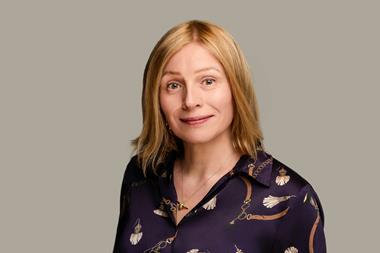“Yes, we feel the competition from banks’ and insurance companies’ agents, who are promoting their open funds, but are using unfair and misleading comparisons,” says Maurizio Agazzi, managing director of Cometa.
“However I haven’t seen a lot of workers opting for that alternative so far. Federmeccanica has been very loyal and committed to Cometa. But it is true that in some companies employers and employees have agreed to sign collective contracts with open funds’ providers as an extra option.”
Cometa is the largest closed pension fund in Italy and the second oldest one. It was created 10 year ago by an agreement between Federmeccanica, the national association of employers in the mechanical industry, including the automotive sector, and FLM, the unions in the same industry. In 1999 it started collecting contributions and in 2000 its portfolio’s management was outsourced to external managers.
It has more than 330,000 members or one third of its potential million, and it managed €3bn as of the end of March 2007. Like all Italian closed pension funds, Cometa’s board consists of one-half employers’ representatives and one-half unions and employee members.
At least three board members must have financial know-how. At the moment they are Paolo De Angelis, an actuary, and Maurizio Francescati, Fiat’s treasurer, both appointed by employers, and union-appointees Felice Roberto Pizzuti, an economist, and Brunello Pianca, a Swiss money manager. There are also three committees focused on finance, administration and communication.
Before the new rules, workers in this industry could only get their employer’s contributions and fiscal incentives if they joined Cometa. Now they can opt for alternatives. Agazzi - who worked with the insurance group AIG-Union Vita before joining Cometa - explains how his fund is dealing with the new scenario.
“We were the first fund in 2005 to change our policy from one investment option, the same for any member, to four different options,” says Agazzi. “We’ve been also the quickest fund to print and distribute the new information documents and application forms, complying with the new rules. We have organised many meetings with human resources and workers in the factories. Sometimes we have held town meetings to reach employees working with very small companies, where the unions are not represented.”
According to Agazzi, employees did not rush to join pension funds in the first months of 2007, and the number of new members has been below expectations. Some market participants thought that 40% of employees would decide to transfer TFR -trattamento di fine rapporto, the portion of salary that is saved, kept in the company’s coffers and given back to the worker as a lump sum when he leaves the company, accrued with an interest rate that is 75% of inflation plus 1.5% - into pension funds.
“Actually only 5-10% have chosen pension funds as we speak,” says Agazzi. “Around 30-35,000 employees have joined our fund or 5% of the 685,000 workers who were eligible, but not yet Cometa’s members, at the end of 2006.”
“One reason is that the new rules became law even before all the details were defined and known to the public,” observes Agazzi. “There has also been a lot of confusion about what happens to TFR in companies with less or more than 50 employees. All the discussion has been focused on TFR, not on the pension funds’ role and importance.”
Everybody agrees that Italians need a huge change of mentality. “They have to realise that the welfare state can no longer cover 100% of their pension needs,” says Agazzi. “In addition they have to accept the idea of losing TFR, which has traditionally been handy cash money in transition between jobs. It is particularly hard to embrace the fact that once you join the pension fund system, you cannot go back to TFR any more”.
For example, if a Fiat employee who is a member of Cometa were to leave both the company and the automotive industry to join a pharmaceutical company, that person could either join an open pension fund or Fonchim, the pharmaceutical industry’s closed fund, but would not be able to go back and accumulate their TFR.
Cometa’s managing director is quite sceptical about the government advertising campaign that was designed to promote pension funds, and which had a budget of €17m. “It has been useful in raising some interest,” he says, “but instead of simply soliciting the choice about TFR, it could have explained why it’s important to join a pension fund”.
People are also concerned about investment risk. “In the next few months we will try to understand why people have not joined Cometa or any other fund, how they perceive the risk of leaving TFR, what they care about more,” says Agazzi.
“It is true that you can choose the guaranteed investment option that any fund must offer, but it is not certain that the promised fixed minimum yield will always beat TFR’s rate.”
In 2006 the TFR rate was 2.4%, better than several pension funds. Cometa’s guaranteed option is called sicurezza - safety. The portfolio of this segment is made almost exclusively of bonds and is managed by two insurance companies, Cattolica and Unipol. The minimum annual return is 2.5% until 2010. “By that deadline sicurezza will beat TFR. Last year’s performance of 1% is not comparable with other funds, because the portfolio has insurance protection that will get only come into action when the contracts expire,” says Agazzi.
The other Cometa low-risk option is monetario plus, a money market fund invested 100% in short-term bonds. It is also managed by an insurance company, in this case Generali, and its goal is to perform in line with money markets and TFR’s rates. The riskier option is crescita - growth - which can invest up to 60% in stocks and which is managed by two asset managers, Société Generale and Duemme - Banca Esperia, a private bank controlled by investment bank Mediobanca and financial group Mediolanum.
The middle way is reddito - income. In 2005, when Cometa started offering four options, this was the default fund for existing members. This compartment has kept the same investment strategy followed by Cometa since 2000 when active management commenced - namely 60-70% in bonds and 20-30% in stocks. Almost half of the portfolio is in US dollars without currency hedging, which, according to Agazzi, explains last year’s performance of only 2.9%. Reddito has six managers: AXA Investment Managers, BNP Paribas Asset Management, Epsilon, Eurizon, Pioneer Investments and RAS Asset Management.
“Every quarter Cometa’s board meets money managers and Cometa’s executives have more frequent talks with them,” explains Agazzi.
“We analyse their performances and also revise the benchmarks. For example, monetario plus is supposed to have a return competitive with the six month Liborrate plus 0.75%, and at the same time managers have a lot of limits regarding risks they can take. This goal was acceptable in 2005, but it has become quite impossible to reach. In any case, we recommend this money market fund only as a temporary choice for new members before they decide what to do, and for older members in order to preserve their capital before leaving Cometa. Reddito has performed better than its benchmark, while crescita has underperformed.”
Until 2005 Cometa’s adviser was Prometeia, then in 2006 the fund hired the European Consulting Group (ECG) to monitor external managers. “However, our internal financial controllers verify whether the managers follow their mandates,” notes Agazzi. Most of the original managers were confirmed in 2005 but ABN Amro Asset Management and Fineco were dropped. “In the next few months we will see also whether we should add one or two more stock-orientated investment options,” says Agazzi. “We are discussing whether the new rules allow us to invest in alternative assets and strategies, including real estate funds and hedge funds, which are not permitted today because of the double fee problem.”
In 2005 reddito was the default option for the transition from monocomparto to multicomparto, and 80% of existing Cometa members stayed in that fund. Now they number 240,000 with €2.5bn in assets. Monetario plus has 40,000 members and €114m. Under the new rules, sicurezza will be the default fund: it has 35,000 members and €344m in assets. Crescita has 10,000 members and €11m.
“We try to help employees make their choices with an online simulation of the returns of the four investment options, taking into account the member’s age, risk tolerance and so on,” explains Agazzi. “But we plan to do more to inform Cometa’s members, especially the ones who have joined the pension fund because they made no preference.”
“Yes, we feel the competition from banks’ and insurance companies’ agents, who are promoting their open funds, but are using unfair and misleading comparisons,” says Maurizio Agazzi, managing director of Cometa
























No comments yet